Charles Pakana (Victorian Aboriginal News)
Right across Victoria, there is a growing number of Aboriginal Gathering Places, community controlled places where Aboriginal and Torres Strait Islander people can gather in an environment that fosters community, culture, and connection. In many cases, they are also a place where reconciliation plays a key role in programming and community building. Our goal over the next 12 to 18 months is to visit all the Gathering Places around Victoria and highlight the incredible work being undertaken by the committed staff, volunteers and general community. Today, VAN Talks travels down to Hastings on Bunurong Country.
To visit the Willum Warrain Gathering Place and catch up with two of the key movers in that place, The CEO Quandamooka man, Uncle Peter Aldenhoven and Community Development Officer Yamatji and Awabakal woman, Nadia Douglas. We’ll kick it off with Uncle Peter.
Peter, thanks for joining us here on the podcast today, brother.
Uncle Peter Aldenhoven:
Thanks, Bruz. Yeah, lovely to be here, Uncle Charles.
Charles:
Peter, you’ve been involved in this place down at Hastings since day dot, a potted history of the Willum Warrain Gathering Place. Because it’s gone through a lot of agony to get where it is today. Give us that in a little potted history format.
Peter:
So Willum Warrain means home or place by the sea in Bunurong language. Our Gathering Place was the 3rd in Victoria after Mullum Mullum and HICSA. Prior to that, I guess for about 20 or 30 years, it’d always been quite a sizeable Aboriginal population in Hastings and over on the Mornington side of the peninsula. And there’d been programs run by the Mornington Peninsula Shire and community houses and in an old hospital. But our mob, we never really felt at home. We’d do a cultural program, then we’d have to pack up our stuff and another group would come in and there was this constant refrain. We want a place of our own and eventually the Council and the then Department of Health in 2014 got behind us and provided us this site at the back of an industrial zone in Hastings.
Charles:
So who was us?
Peter:
So the us was Willum Warrain Aboriginal Association. So we began in 2009. I was a founding member and it was created in response to this long held desire for a place where we could gather together and connect around culture and mob. So that preceded the opening of Willum Warrain in March 28, 2014 had doors opened. We had one employee who was part time and you know people were very, very excited, you know this long held ambition for a gathering place of their own. But after about 11 months, the Department of Health removed that solitary position, redeployed the staff member and unfortunately we had to close for five months, which was shattering and our board made the tough decision that we needed to preserve our small amount of capital for when we got a staff member and we could reopen.
Charles:
Was there any talk about just closing down and trying another option?
Peter:
Well, yeah, we were. We’re pretty despairing. Mob was really, really distressed over it, you know, because they’d fought so long to get this place. But philanthropy came to our aid and provided funding for three years for a gathering place coordinator, part time, three days a week, and then we’re able to get neighbourhood house funding. So we had that one role that was full time that we could anchor the organisation around. And in the meantime, we continued to seek philanthropic funding, funding from all levels of government and piece together, you know, a small workforce that we’re able to build on. But for many years we only had. For the first five years we had three staff maximum and we struggled, struggled to run programs and to run a full range of events throughout the year.
Charles:
It’s a bit different now though from that, well, that initial three days a week, one person. Now you’ve got how many people working here?
Peter:
We have 23 staff, 19 Aboriginal staff with the largest employer of Aboriginal people on the Mornington Peninsula and we run programs for men, women, bush playgroup, bubups and boorais. And then our Deadly Youth after school program and Fridays is our community drop-in day mob and all our allies drop in and the last Friday every month we have big Mob Cook Up whoever turns up. We usually get about 80 people. We harvest Bush Tucker from our grounds and enjoy a lovely meal. It’s a beautiful joyous occasion throughout the year in addition to our programs, we run the full range of Aboriginal cultural events. All the marquee events, you know, Sorry Day, Rec Week, NAIDOC Week. Just to give you us a flavour of a couple of these events. I think in many ways their most significant event is their Welcome Baby to Country and Bunurong Elders so generously bestow names from Country on our babies. You know, many of us traditionally would have had names from our own countries cycling through generations.
Charles:
And of course, yeah.
Peter:
But Bunurong Elders, they paint up our babies, mother and Country. They’re presented to the Elders in coolamons on possum skins and all our women make beautiful decorations, amulets for the for the babies. And these babies get a name that they can hold onto an Aboriginal name from Country for the rest of their lives.
Charles:
Oh that’d be an emotional event
Peter:
Yeah, it’s very this year, Charles was pretty funny. There were 41 babies and what could go wrong with 41 babies?
Charles:
Nothing at all, of course. What went wrong, Peter?
Peter:
Nothing. It was it was sort of miraculous. I would have vouched for the trips home but there was a set of triplets. There were two sets of twins. And there was 5 babies in out of home care and you know, whatever happens to those babies later in life, you know, we hoped that moment where they were named for Country and a photograph was taken and a certificate presented, you know, that’ll be a protective element in their lives going forwards.
Charles:
Well, it does bring up the relationship with the Bunurong Traditional Owners of this of this area, how has that evolved over the years?
Peter:
Yeah. What’s unusual about our Gathering Place in comparison to some is that the vast majority, 99% of mob who live on the peninsula aren’t Bunurong or Boon wurrung people. So you know Aboriginal wise, when our feet are on other people’s Country, we’re always very, very conscious there. It’s not our Country. We can’t speak for their Country. So we always seek guidance as to the best way to follow Bunjil’s law on Bunurong, Boon wurrung Country. We rely on them for that cultural advice and all our key events. We get the BLC to come and do Welcome to Country and smoking and particularly this one. I was just describing the Welcome Baby to Country. On the other hand, I guess over the years we’ve come to understand our different roles. You know, their role is about safeguarding their own Country and you know the land, water and skies. But we really feel that that sort of vacuum of the community place where mob comes together to connect around culture and you know, we do a lot of charitable work, you know, supporting mob when they’re experiencing distress. Yeah. So, we’re sort of connected, but we run in parallel in some respects, yeah.
Charles:
So has this been in discussion with the BLC, the Bunurong Land Council, that, look, here’s what we’re going to do. Here’s what we’re not going to do?
Peter:
Yes, yes.
Charles:
And how much of that was discussed in the early days and how touchy would that have been at times?
Peter:
It is difficult. There are tensions, yeah, but I think we’ve come to a sort of mutual understanding over time. We have clear agreed areas that we don’t go into. For example, the Bunurong Land Council has given us permissions to do Smoking Ceremonies and Water Blessings here at the Gathering Place, just internally for community.
Charles:
That’s huge though, isn’t it? That’s really huge.
Peter:
It’s incredible. Yeah. Generosity for all our major events they come in and do it, yeah. And we don’t do any of that sort of public cultural work outside our two hectares. So that that’s the arrangement we’ve got in place. There’s other Aboriginal businesses, you know other Gathering Place in Frankston, Nairm Marr Djambana and you know we’ve had discussions with the Bunurong about where we sit in that overall mix. So, so there there’s a sort of a shared understanding, but it had to evolve over time and you know there were a few moments where you know we had to clarify who, who’s doing what on in which area. But now we’ve it’s a lot clearer.
Charles:
But that’s going to be a constant thing, isn’t it? Because as an Aboriginal Gathering Place and as you mentioned 99 plus percent not being Bunurong or Boon wurrung really being on a different Country, I assume there’s got to be that open lines of communication between the BLC and Willum Warrain and you’re the one at this end maintaining that communications.
Peter:
Yeah, to a large extent. We’ve got Nadia Douglas, who’s our community engagement officer. We had a visit yesterday from their community engagement officer and he popped in and he was wondering how could we help with your Christmas event, our Koorie Christmas event, which is a big event. You know, we get about 300 kids to turn up. You know he was offering to support it and he, I suggested that they might want to support some of our mob who are doing it real hard leading up to Christmas. And yeah, so, so there’s things like that that are happening all the time, that are lovely and we appreciate.
Charles:
What are some of the biggest challenges you have though aside obviously from the ever-present problem of how do we fund the 23 staff and the ongoing work here, what are some of the key challenges that as a Gathering Place you have?
Peter:
Well over time at the location of our Gathering Place. Now it’s reasonably well evolved, but originally was a Shire dump site, road fill, dump site. Yep, hundreds of trucks of road fill had to be removed from the site. So we’ve had to repatriate the site or we call it healing country. So we burnt it many, many times in the first 18 months to get rid of introduced weeds and reactivate dormant seed stock. And then we planted six and a half thousand local plants and now we’ve got our own Bush Nursery and we grow, grow plants from country here. But we’ve walked around earlier on today and you’ve seen that new area that needs a lot of work. We’ve completely outgrown our spaces. We’ve got this little meeting room we’re sitting in. We’ve got a community shed. But you know, we have these two social enterprises, the Bush Nursery and the cultural tours. 10,000 people have tracked through our Gathering Place on tours this year. You know what we would love is a fully landscaped substantial Pun Pun or wetlands area out in that adjacent block. And I an entrance building that’s you know showcases our culture and our mob down here and you know has a sales area. The flow of visitors is going to continue and increase and we just we just need that proper entrance building that you know got an Aboriginal styling to it and can deal with that growing.
Charles:
So it sounds to me like this is actually a very important place not just for culture and connection for the local Aboriginal community, but also a place for reconciliation. And we see this increasingly with Gathering Places across Victoria where you’re really taking on the role of reconciliation, which we could argue is not really your role. And you and I have yarned about this in the past. How much of the business actually is reconciliation and how do you no pun intent reconcile with that?
Peter:
We stole ourselves as a place of hope and healing for mob and you’re right it is a core focus Charles. But you know at least 25% of the work we do is in the reconciliation space and we describe ourselves as a destination for reconciliation of what was mentioning a second event earlier on in the in the interview. Our other major event is our annual Mornington Peninsula Reconciliation Walk and this was big this year. This year we had 1200 people. There was all that optimism around voice and it was it was a lovely, joyous occasion. Yeah. We just walk from the Hastings foreshore around the back streets, arrive here for a Welcome reconciliations, sausage and cultural performances. And you know it’s so clear to us there are so many non-indigenous people in our local area who want to be allies and supporters and engage with mob. So that work we do through cultural immersion tours and cultural awareness training is really critical. You know, poor voice. One of the reasons it fell over. It had to do so much educative work, you know?
Charles:
Yeah. Do you find it tough though, or wearing that it really is a job that you have to do but it isn’t maybe something that was intended to be undertaken, you know, those 10-14 years ago?
Peter:
My Aunty, my senior …Aunty, [she] is my Aunty too. Aunty Joan Hendrick. She used to say … about reconciliation. You know, we’re all in the same canoe. We may as well paddle in the same direction. It wasn’t a real ringing endorsement of reconciliation. But her life’s work was bridging the gulf. Yeah. And I sort of model myself on her. And you know, I think our destinies are entwined, you know, a sub-regional mob, you know, for us to achieve equity and justice and a rightful place in our ancient countries, you know, we do need to work with a broader Australian population. And I’ve often thought about this reconciliation interface and there’s, there’s healing going on in both directions, you know, for settler Australia, yeah. And Invader Australia, they have that, that guilt, you know, that white guilt. White guilt, yeah. And. And only we can liberate them from you know, tragically. You’re right. It is onerous. We have to, you know, deal with our own generational trauma and impacts of colonisation, and we’ve got to heal.
Charles:
Try and work out the rationale there, brother.
Peter:
But there’s something about when you share culture and non-Indigenous Australians listen and respect and hear that is healing to us too, you know. It gives us strength and a sense that finally our voices are being listened to.
Charles:
Brilliant. So what is the goal for 2024? What are the big ambitions that you, as the CEO, have for this place?
Peter:
So we really want to advance our work on that new pun pun that extension to our existing wetlands. We’ve just got the permit in place and it’s gone out to tender that project and we’re starting that work of getting our master plan converted into an entrance building, a working beautiful plan that could go out to tender too. So they’re both reasonably big projects, but they’re critical because the scale of what we’re doing here, the traffic, we need those better facilities, not just, you know, tin sheds and old repurpose weather board.
Charles:
Yeah, you’re sort of outgrowing that, aren’t you? Well and truly well look, what we’ll do is we will ensure that on the website, the Victorian Aboriginal use website accompanying this particular interview, we will have the open hours and the open days for this place down here. And we encourage everyone to come down and visit one of what I consider to be the most successful and I think culturally grounded and wonderfully immersive Gathering Places here in Victoria Peter, we will be speaking again because any opportunity I have to come down to this beautiful Country and share time with you and the community is something I’ll always grasp open handed. So respect to you and thanks for coming on to the podcast, brother.
Peter:
Thanks. Been my pleasure, Bruz.
Charles:
Joining me now in our special broadcast from the Willum Warrain Gathering Place here at Hastings is Yamatji and Awabakal woman, Nadia Douglas, who is the Community Development Officer here at Willum Warrain. Nadia, thanks for joining us on the podcast today.
Nadia Douglas:
Thanks Uncle. Thanks for having me.
Charles:
Little bit of an overview of your job. You’ve been here for a couple of years and in our pre interview you were very, very blunt and say Oh no, no big challenges, but then we identified quite a few you’ve had. Let’s start off by understanding what is your role as Community Development Officer?
Nadia:
So, in a nutshell, my role here is basically to engage as much community as possible in our region here on the Mornington Peninsula, both non indigenous and indigenous population down here, to get as many people through our gates as possible. We want to be able to tell everyone who we are and what we are doing down here in Hastings, I have a really big passion in engaging our young mob, our young youth in our region. I’m a mother of three boys, so connecting our young community to our Gathering Place is really important to me.
Charles:
How many schools across the area within your purview?
Nadia:
There’s a lot. We had over 52 primary school invited to our Koorie Kids Day Out, so that’s within the Mornington Peninsula and Frankston catchment. And then we have around the 30 mark in secondary schools as well. So there are a lot of schools in Mornington Peninsula and kind of pushing into the Frankston.
Charles:
What are some of the challenges you’ve had in engaging with the schools and maybe getting their support to get kids out here for events?
Nadia:
Yeah. So it can be really challenging engaging with schools. We do have some wonderful relationships with some of our really close connected schools. Western Port in particular have a fantastic relationship with them and their staff members and same with other schools in the catchment. But I have found with engaging with schools, there’s quite a few challenges. One of being is connecting to the correct staff person to then be able to petition against having these kids come along and be an advocate for those Aboriginal kids. And I’m finding you know, schools are low on resources as it is. So it’s understandable that they don’t have the staff and facilitations to sometimes be able to provide those excursions and stuff for a number of students that aren’t a full cohort. So we’re asking for the Indigenous students and First Nation students to come along to our events. But that could sometimes range between 5 to 20 to 30 students within the whole school cohort.
Charles:
But you’ve got a bit of a weapon in your arsenal when schools may come back and say, look, we don’t have the resources because you was telling me before the show I’ll leave it to you, but what’s your response in those situations?
Nadia:
Well, we’ve had to be quite clever with how we respond to that instead of just completely disengaging and going, Oh well, they can’t come, That’s we’ve now brought up the fact that you know, those extra funding sources when applying for our grants for these events, that we also budget in costs for transport for some of these schools to be able to, because those costs are quite expensive. For a bus hire, it’s over $400.00 and then also potentially assisting with CRT costs and things like that. So they’re not losing CRT.
So a teacher, a external teacher, to be able to come in and either teach the class that the teacher he’s coming out of or be able to participate in facilitating bringing those kids along. But.
Charles:
You told me also that we had quite a success with regard to a youth summit recently where over 300 students rocked up at this place now. So what’s a youth summit mean for the students in this area at Willum Warrain.
Nadia:
Well, it’s a day of connecting to culture. Some of these kids in the schools don’t even know that there’s other Aboriginal kids in the school. Yeah, because they don’t go around and, you know, wearing a flag. They’re not waving their arms around saying I’m indigenous, I’m Aboriginal, like this is me. Some kids choose not to do that, but it’s really, really wonderful to see these kids come from all across the region. We had our youth summit and just a little insight to that event is our hut out here. Gunditjmara Hut. I walked in there and there was about 10 young fellas from a range of different schools, all just sitting in there quietly yarning to one another. Hadn’t met each other before. There was a couple that were cousins from other schools, but the majority of those children had just met on the day and they’d found a common interest with one another and were sitting in that that space, just sitting in there yarning together. And it was beautiful to see that they are able to make those external connections outside of their school surroundings. And also others go, oh, I didn’t know that they were Indigenous. I didn’t know that, you know, that person in my class is also Aboriginal. It’s just a really beautiful connective way to bring them together and have them, you know, feel have come to a place where they feel connected and feel welcome.
Charles:
And do you see that these are opportunities to get young people along a cultural path that might otherwise have just gone the rest of their lives without even identifying? And then of course, you’ve lost a whole family, potentially in the future to our mob.
Nadia:
100%, I feel like there’s especially down here in Victoria where you can’t look at someone and identify whether they’re Aboriginal. And there’s a little bit of a shame attached to that with some of our young mob who haven’t been brought up in strong cultural backgrounds and have that disconnect to culture. But they kind of sometimes feel a bit ashamed to go, Oh yeah, I am Aboriginal. And when they come here and they see the vast differences in all of us, they feel proud again.
Charles:
They see young blonde, blonde haired, blue eyed Aboriginal people. Yeah, it’s a great thing, isn’t?
Nadia:
It yeah, it’s wonderful. It’s so nice to be able to see them go, oh, I can be proud of that and I can be connected to that and that is a meaningful thing. And if we don’t bring up our young people to be strong and proud, what does our future entail?
Charle:
Now we’re also talking about other events as well. Youth is only one side, even though it’s obviously a clear passion of yours. Nadia, we’re talking about a lot of other community engagement. And you were mentioning before that in your community engagement work, you’re constantly coming across people who are saying, wow, we’ve never heard of Willum Warrain, even though the place has been here well, well over a decade. What’s the cause of that? How do you deal with that? Given the longevity of this place and the reach of its programs? What do you do to connect with community?
Nadia:
Well, we do a fair bit. We run a lot of programs here with the general public are welcome to attend nearly every single one of our events here. Everyone is welcome too. We have a lot of advertising in regards to those events, but there still is quite a number of people that live on the Mornington Peninsula that do not know who we are and do not know we exist. I try and do a lot of distribution through our local services. We are very well connected with our local community houses and all of those other service providers. But if you’re not also not tapping into those services as a community member, then you aren’t seeing those things that I’m providing. So I’m also sending out things to doctors, surgeries, dentists, chemists, all of those places where nearly everyone has to access at some point in time to be able to, you know, look on the wall and go, oh, what’s that place, what do they do? I’m interested in getting involved with them because we do a lot of today’s our community outreach day. We’ve got lots of people here doing community gardening have do every Friday and then we’ve got our big Mob Cook Ip. So we try and get that out to the community to try and get as many people here as possible, which is definitely working. Our last two to three big Mob Cook Ups, we’ve had like 70 people show up on a Friday and.
Charles:
I’ll tell you what it’s a it’s a good nosh up to. It really is good food and I’m encouraging everybody down here get out here on the Fridays for the community call cups. They are really well worth it. You mentioned also in the pre interview yarn about was it the reconciliation lunch 1300 people ticking through the gates and I’m looking around now at the at the land you have here. How the hell did you fit 1300 people in here and cater for them?
Nadia:
We were back-to-back and those sausages were cooked from 8:00 in the morning and then stored in ovens. We had to get some ovens in for the day to keep them warm and look at it. It’s a challenging event. It’s a wonderful event, an incredibly rewarding event.
Charles:
1300, though? I mean, you’d be thrilled to get that somewhere in the CBD, but to get it down here in Hastings, What led to such a massive turnout?
Nadia:
I think this year there was a lot of allies wanting to support mob in regards to the referendum. So that was probably an additional support. There was a lot of media happening at the time. So there was a lot of people that were coming down and going, oh, what can we do to support? And that’s, you know, a great one to, if you’re free on a Sunday to come along, show a face and walk with us. But yeah, I think we do a lot of outreach to the schools and all the local communities and all everyone to come on board. We do a lot of work with the local radio station and newspaper and try and let as many people know as possible that this is the event that we are running to come and stand with us and walk with us and be a part of our community. And it definitely shown that we do have wonderful allies.
Charles:
But what are the challenges you’ve got set aside for yourself for 2024?
Nadia:
Space. Yeah. Look, it’d be interesting. We are yet to know what the 2024 walk will entail. We are hoping for that to be about truth telling and that journey towards the next steps of our future, especially after the results of the referendum. There’s a lot of community that were hurt by that. So having us walk together for Treaty and truth telling will be really important and hopefully we have those allies standing beside us, walking with us and I’m sure we will. The allies that were here last year aren’t going to be any different to the ones that are going to be here next year. So yeah, hopefully we get more numbers where.
Charles:
Well, you’ve mentioned allies a number of times and I know that over the years when I’ve been coming down here, it’s always it’s a place of reconciliation down here of allies working together with mob. Is that a huge part of your work to engage with the allies as well as mob?
Nadia:
Equally, equally part, I wouldn’t say it’s a huge part, I would say it’s a 50/50. My role is to engage with anyone who walks through our gates and we do a lot of engagement with our mob. Hastings itself has quite a high number of Indigenous residents along with Capel Sound, so the other side of over near Rosebud out of the peninsula really hard. We our biggest struggle with getting mob and community from that side of the peninsula is the transport. So there is no direct route from Hastings to Rosebud. People have to either travel into Frankston and then travel back out. We obviously offer support and transport for those who wish to come to our programs from that side, but that has also been in a challenging effort to engage that side of the peninsula with us over here just because it’s so hard for people to connect.
Charles:
It is a bit of a difficult one. Let me just leave it with this one last question. You had 1300, last year’s March. What’s your prediction or hope for this year’s March?
Nadia:
Well, I don’t know how many more sausages we could cook. However, you know as many people as possible. I don’t know what we’ve had a 25% increase. I’d like 1500 to round a number off.
Charles:
I wish we had the cameras on right now to get the look on your face with that one. It was a mixture of hope and dread.
Nadia:
Yeah, no, nothing’s dreadful. It was. It is such a beautiful event. To see so many people walking through the foreshore and through Hastings and coming along here and participating in that connection to us in our community and to have all of our mob here and all of our supporters here is just fantastic. It’s such a beautiful day, so as many people as possible, but on a jump on board. We are running out of room though.
Charles:
We can always ship some people down from Melbourne CBD to build up the numbers. Nadia Douglas, the Community development office here at Willow Moraine, Thanks so much indeed.
Nadia:
Thank you so much. Thanks for having me.
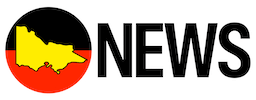

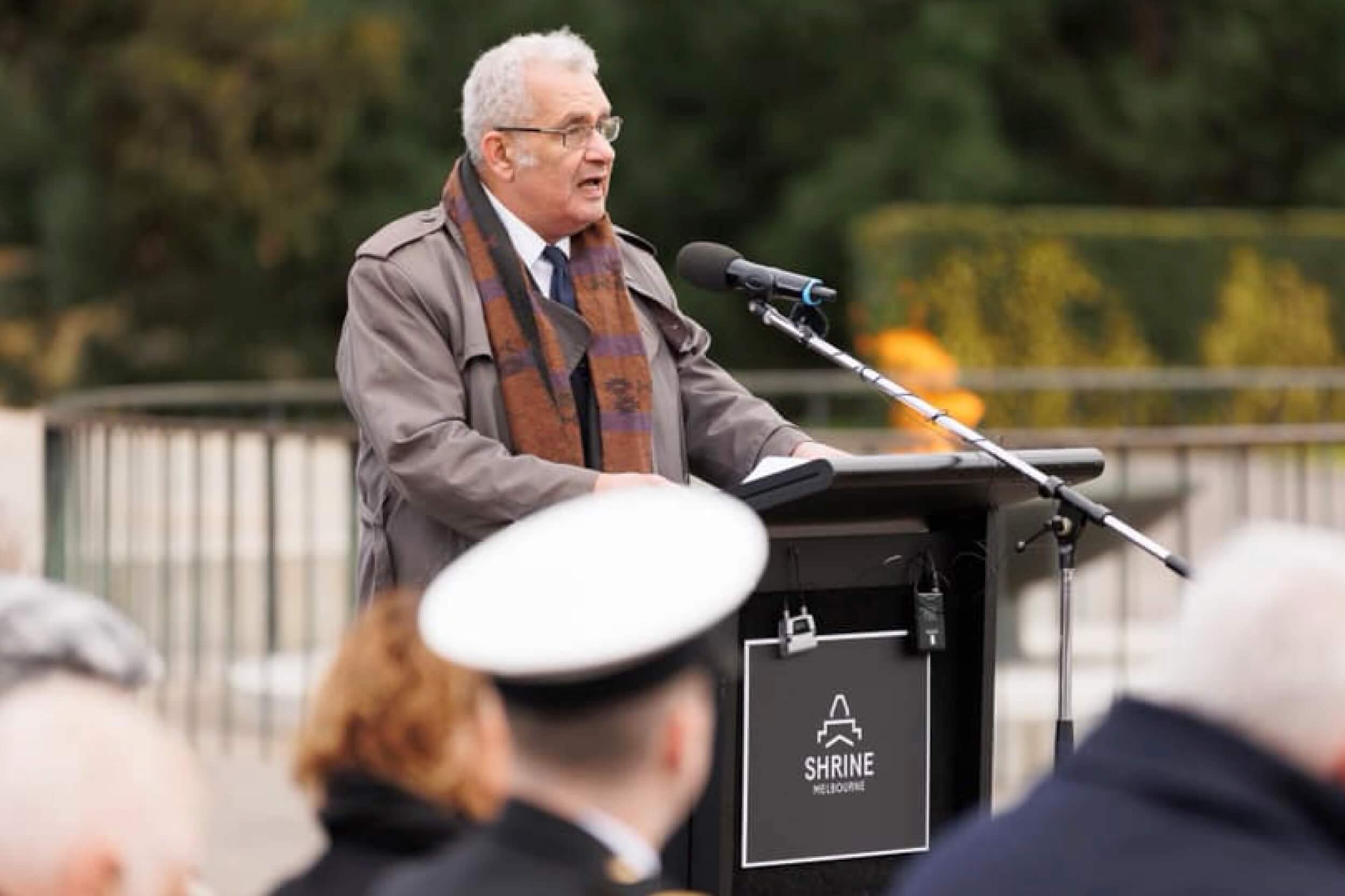
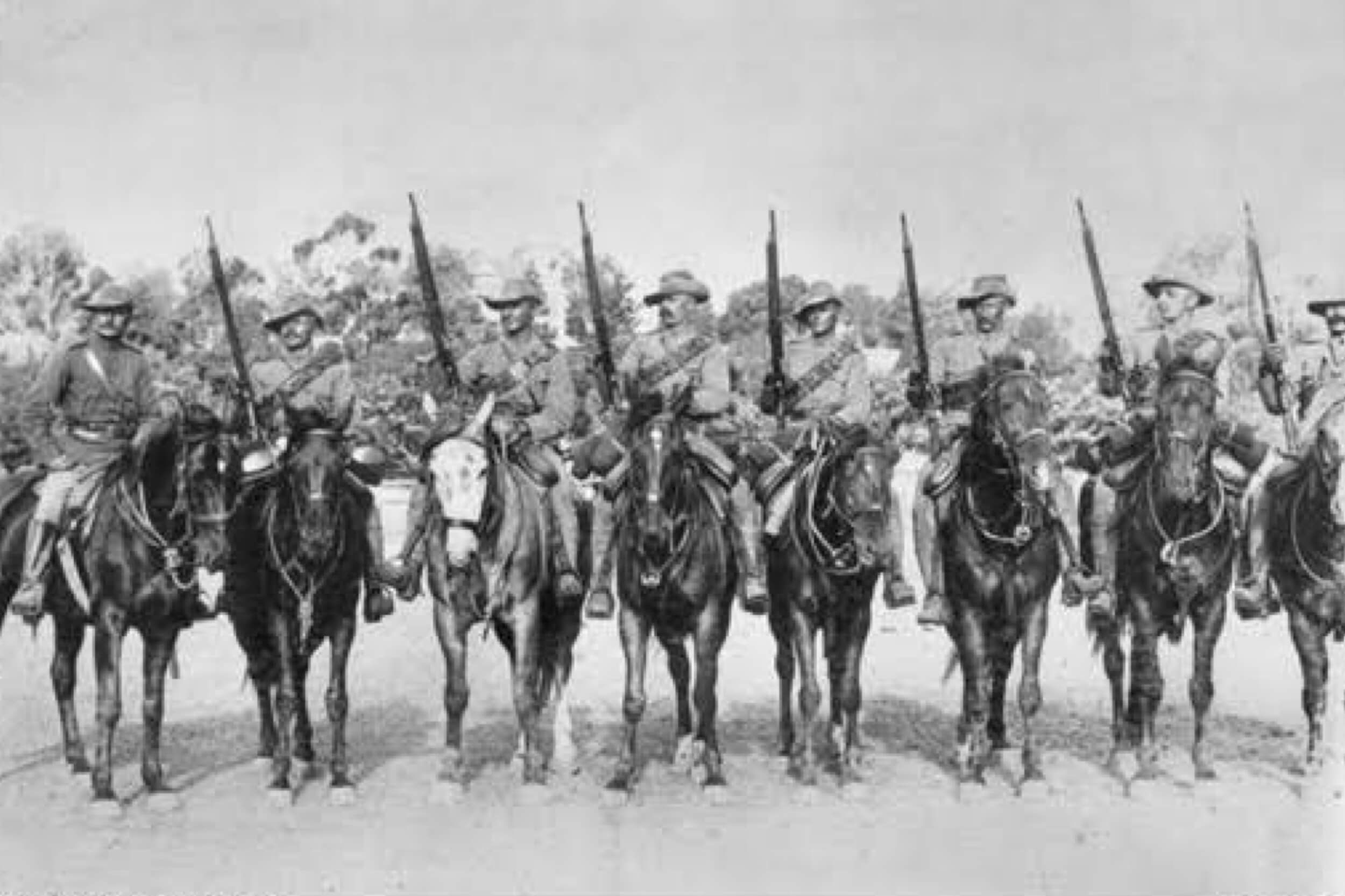
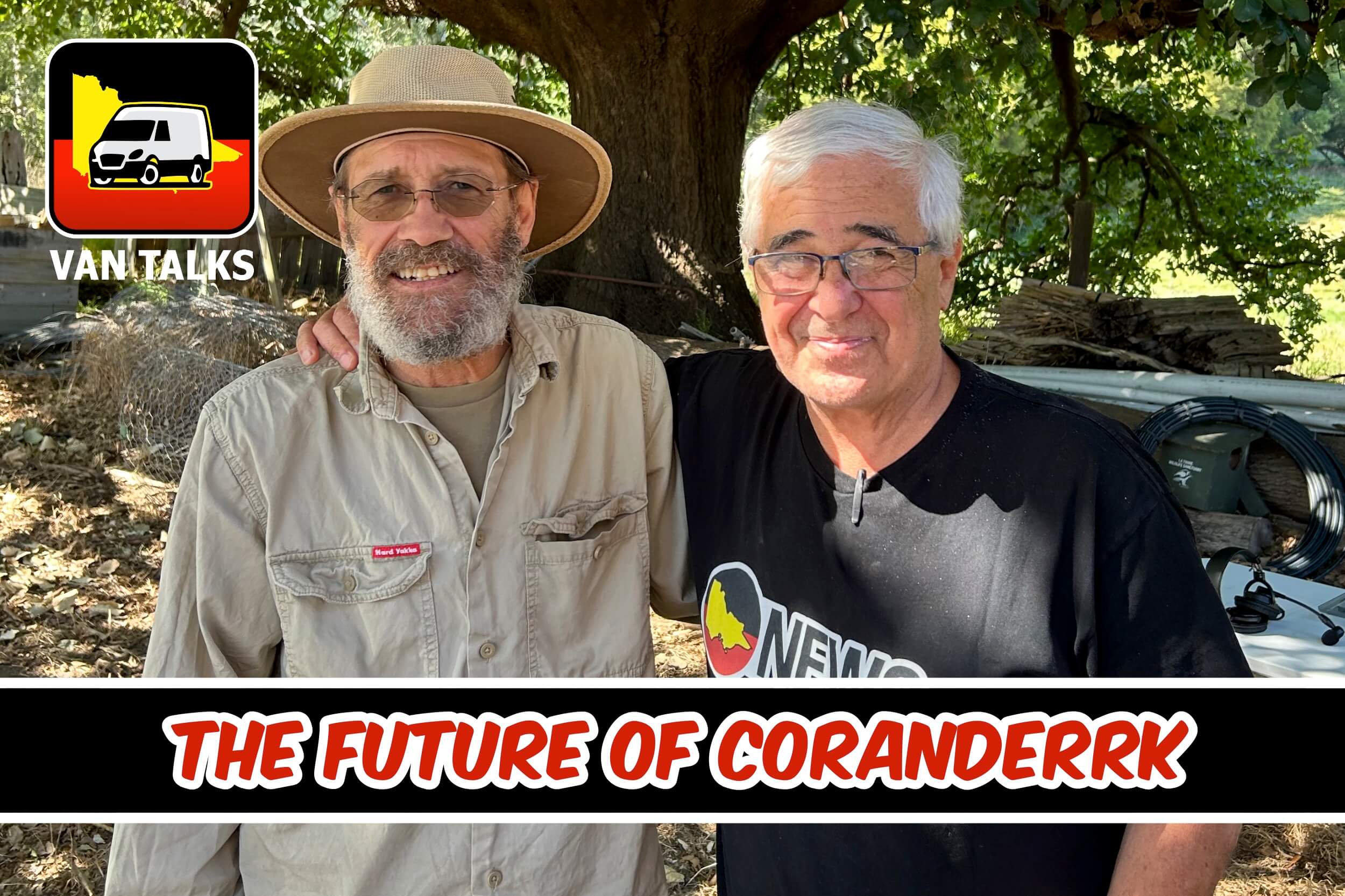
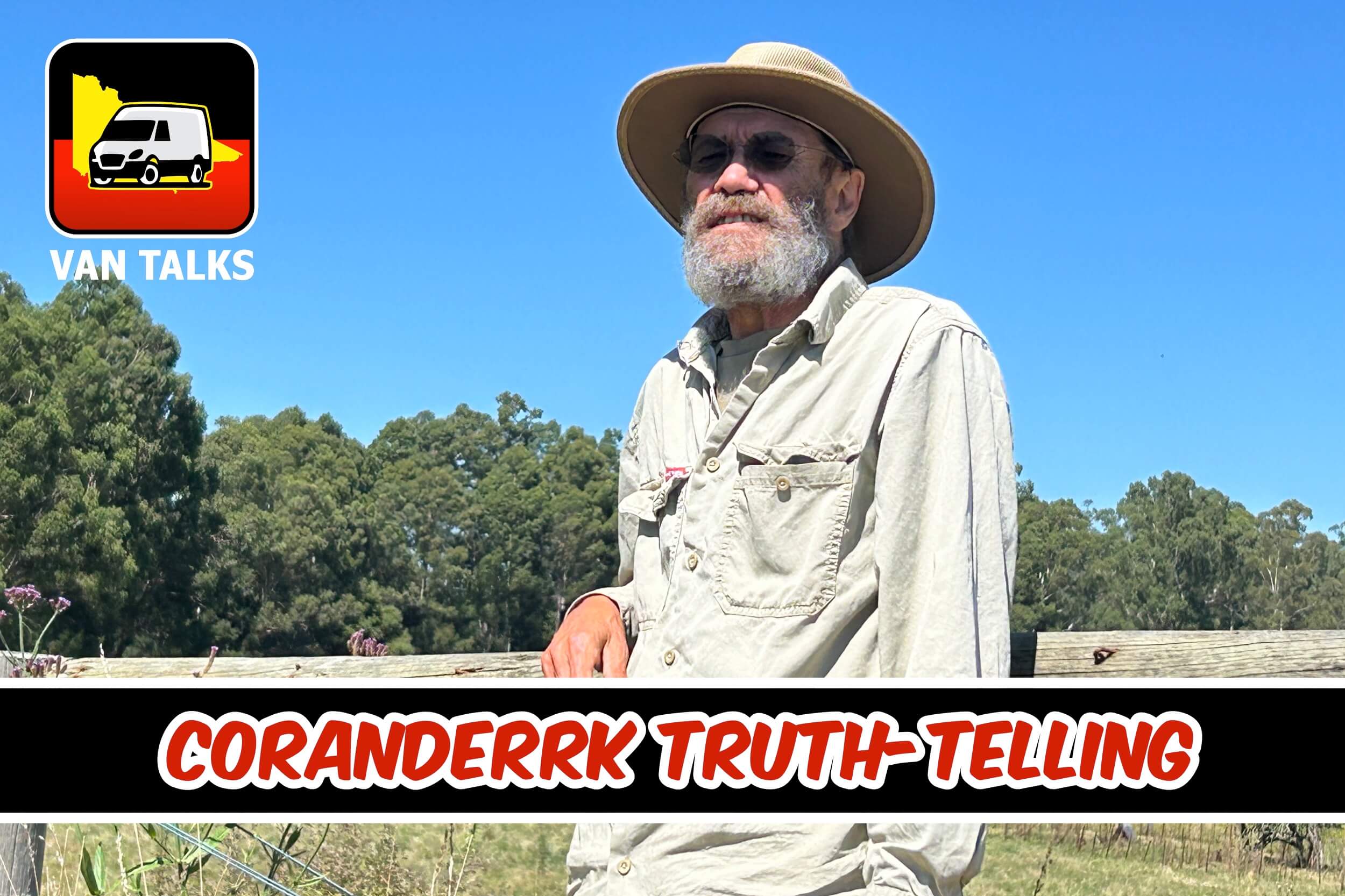
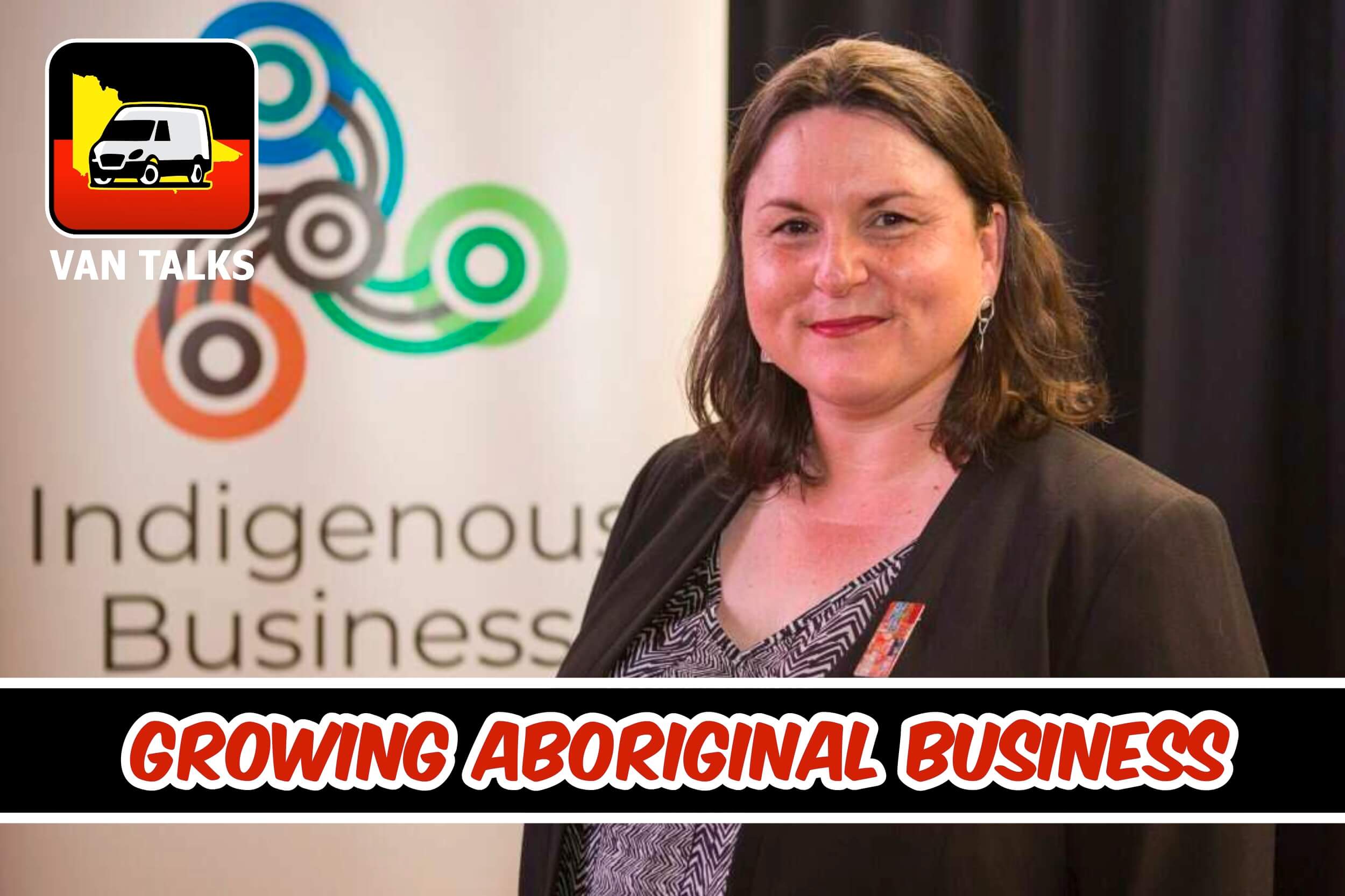

0 Comments